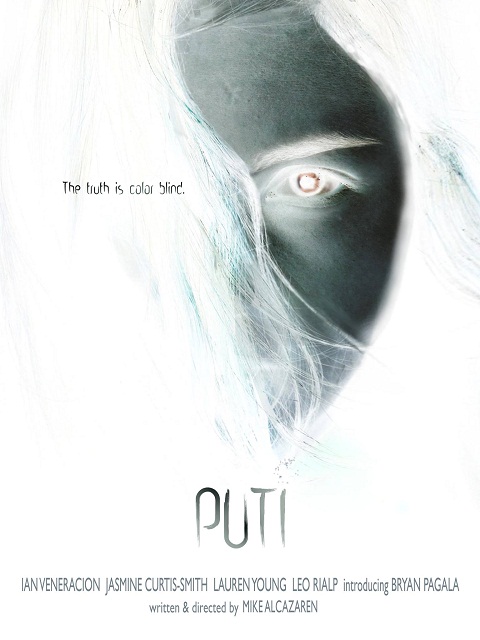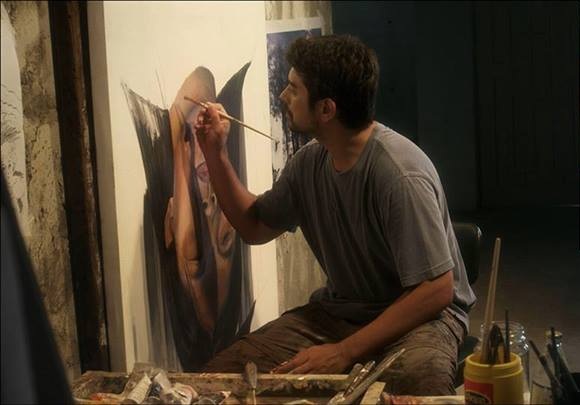Filtered By: Lifestyle
Lifestyle
Movie review: The pitfalls of morality in 'Puti'
By KATRINA STUART SANTIAGO

'Puti is written and directed by Miguel Alcazaren and was entered in the first CineFilipino Film Festival.
Yet there is also a clear sense of how this film is taking from long-drawn and overwrought issues in relation to art and creativity. That its biggest failing is that it doesn't add onto the intelligence of existing art discourse is no surprise. It was busy trying to point out something else.
The invisible artist
Amir (Ian Veneracion) is invisible by most counts. He is artist working in his own studio, the first floor of a home that he shares with Jaime (Bryan Pagala), his young son. They seem to exist in their tiny world, the father and son, away from family and without friends, their universe small but with art and creativity.
The artist's studio is dark and gloomy, and welcomes only another person to this story. Nica (Jasmine Curtis Smith) is an art student, obviously enamored not so much by the art as she is by the artist that is Amir. She is the artist's assistant, helping prep canvases and do photoshoots; he is her mentor – never mind that there is no moment when it seems that Amir is teaching Nica anything.
Amir's invisibility is borne not just of the way he deals with the world, mourning as he still is his wife who died two years earlier; it is also borne of the work that this artist does.
He makes forgeries of contemporary artworks, now with technique down pat, mechanically working towards creating fake versions of works that sell at foreign auctions. He's got an agent – a lawyer – who buys the work he does, for an unknown client. He is about as invisible as an artist will be, selling work that isn't his, doing his own art which does not sell.
That Nica is not some bright-eyed innocent art student who thinks the world of artmaking and creativity is not so much perfect counterpoint as it is necessary voice of naivete. When she is told by Amir that his original work has never sold well, she asserts herself only to say that that just seems wrong.
Art's horrors

Ian Veneracion as Amir
The story of the blind woman he takes photos of for a new painting, tells of a story that is sad, but even more so scary. It is all the foreboding one needs about this story.
Because then the story evolves into a darkness that is beyond Amir's artmaking, as it is about the possible loss of a child, if not his own ability to do the only art that makes him some money. He wakes up after an accident to find his life unraveling. There are bills to pay, but no art to be made without a sense of color. There is a son in the ICU; he waits for him to wake up every day.
Amir is being followed by the strangest of dreams, ones that happen in a universe of the few people who are part of his life: Nica and Jaime, the lawyer who buys his works, the blind woman he had photographed last. The narratives are intertwined in his dreaming and his imagination, and nurses and doctors, the unfamiliar hospital, become part of what seems to his new life.
His art studio comes to life, which is to say that the canvasses slowly become empty of its images, and art imitating life becomes the strangest of concepts, when art becomes alive.
It was scary for sure and could've dealt more deeply with the psychosis that is in Amir's kind of artmaking. We needed to know more about his character in order to understand how and why this universe would be made available to him; he had to be more than just some discontent artist who needs to make ends meet.
He needed to have depth, we needed a sense of what goes through his head not just when he stares at the image he is to copy, but when he has to rationalize the work that he does. Alas, we don't have much of that, and so the horrors that Amir experiences remain all that we know of what goes on in his head. And certainly those are not enough.
The death of art
As is the death of this movie, is its moralizing.
Because in fact it could've worked with the idea of forgeries as artmaking too, and certainly there is a whole narrative about creativity to be had here, given the kind of creative process that Amir has. Where he copies paintings upside down, where he needs a real peg for images, where he is one to slowly but surely work on pieces.
It is copying, yes. And illegal too, of course. But there is more here that a moral compass cannot fathom, precisely because there is creativity still.
Ah, but this film did not know how to rationalize the horrors that Amir was going through, and as with many a local film, indie and otherwise, it falls back on the ever dependable basket of moral issues that is but part of a national consciousness. This is wrong, that is right; everything is black and white.
Except that it isn't, in real life and in art, both. The film could've worked with precisely that as premise, and seen it through to more intelligent discourse that doesn't simply fall back on right and wrong.
The only thing worse than the trap of moralizing that “Puti” falls into is its decision to over-explain everything. It could've ended with the truth about the horrors that Amir was experiencing; instead it found the need to have the characters explain themselves, and suddenly make everything right with this world. Happy endings are the bane of local cinema.
Some acting saves the day
Curtis Smith (please stop using a hyphen for your last names, unmarried celebrities!), is turning out to be quite the actress. She doesn't have much to work with here, but she comes up with a credible enough portrayal of Nica, as critical art student who is able to see the work that someone like Amir does and think it worth learning from. Certainly her performance in “Transit” was far better than this one; but that movie also gave her more to do. This one forced on her a quiet, where she doesn't ask questions, but gives Amir a quizzical look; where she doesn't say anything but her love for Amir is in her discomfiture.
Veneracion meanwhile, might be the only actor who can credibly play Amir, with a hand that knows to do art and a face that acts with all frowns and wrinkles in place (stop with the botox, actors, seriously). Veneracion is able to work into this character all possible forms of confusion and fear, even as he shifts from father who tries his hardest at being parent, to husband mourning his wife. He is rightfully distant from the sleazy lawyer (Leo Rialp) and barely speaks to him. It is clear why someone as young as Nica might fall for this man. Yes, Amir barely speaks about what goes on in his head, about the art that he does, the work that he has found can pay the bills, and that is this character's undoing. But that is not Veneracion's fault as it is this story's.
The main fault of which is how it explains the horrors that Amir went through – because so many minutes into the film, I had an inkling about what this film was doing. I crossed my fingers that it wasn't falling back on that horrof film formula. But no such luck. — BM, GMA News
“Puti” is written and directed by Miguel Alcazaren and was part of the first CineFilipino Film Festival. It won Best Cinematography for Robert Yñiguez, Best Production Design for Rious Caliso, and Best Sound for Mark Laccay in the first CineFilipino Awards.
Images courtesy of CineFilipino
Katrina Stuart Santiago writes the essay in its various permutations, from pop culture criticism to art reviews, scholarly papers to creative non-fiction, all always and necessarily bound by Third World Philippines, its tragedies and successes, even more so its silences. She blogs at http://www.radikalchick.com. The views expressed in this article are solely her own.
More Videos
Most Popular



